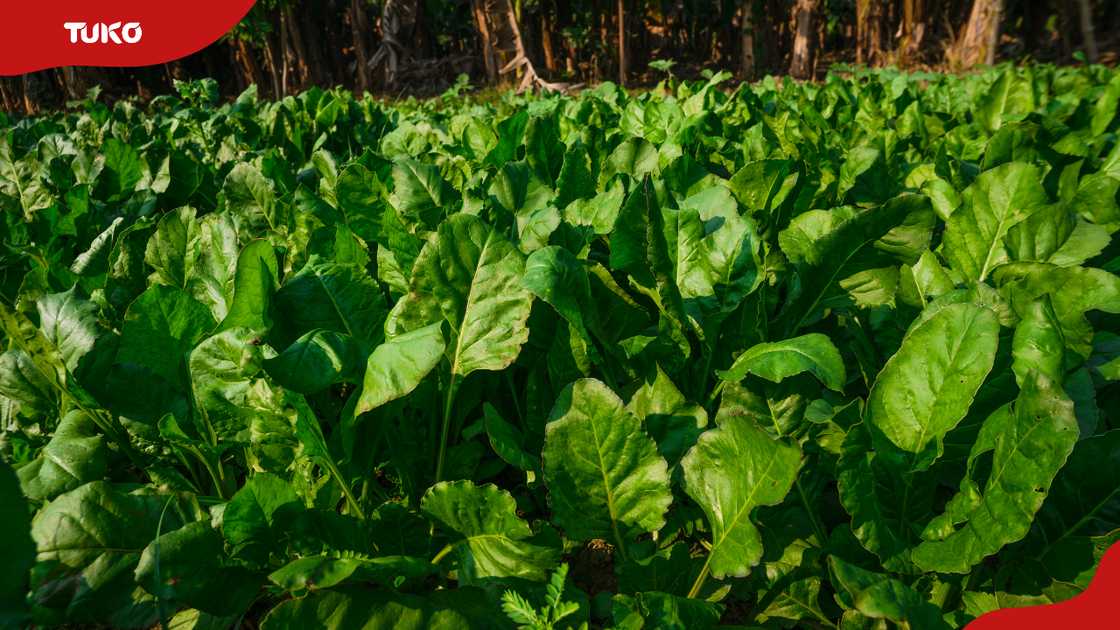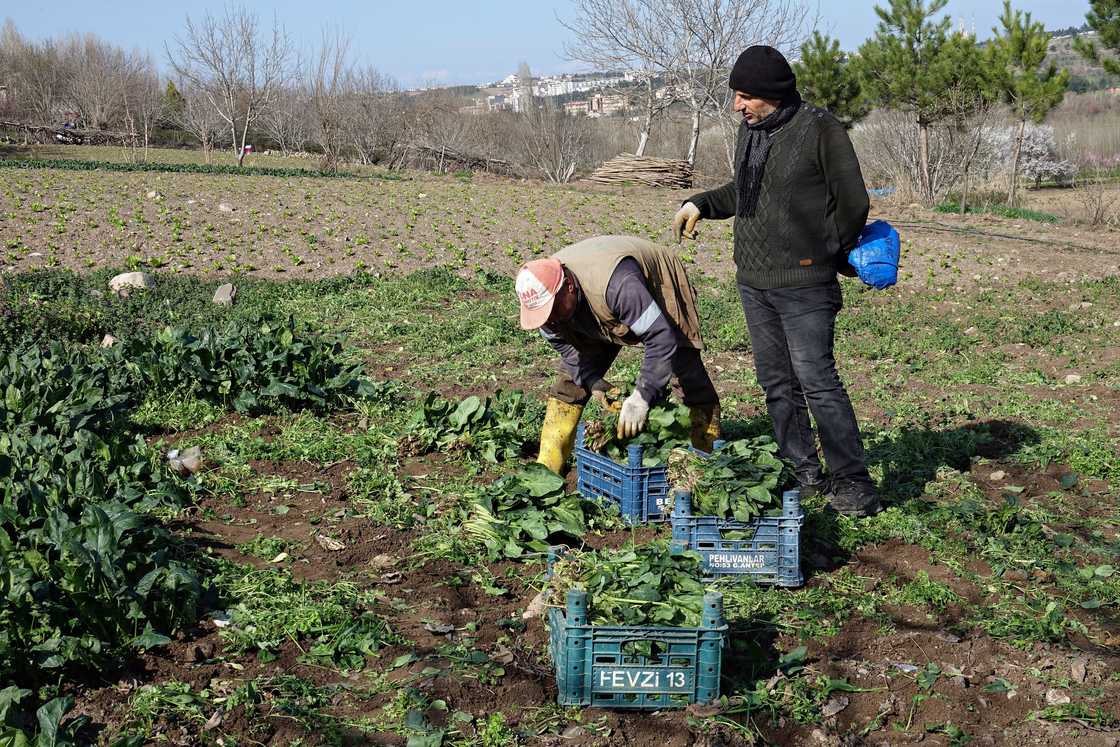Popeye’s favorite leafy green is both adaptable and packed with nutrients, making it ideal for backyard plots or large-scale agricultural operations. Regardless of whether you're new to cultivation or a seasoned pro, understanding how to cultivate spinach is essential. Its lush foliage and deep taste flourish under appropriate maintenance. By following the correct procedures, you can savor freshly picked, locally grown produce swiftly.

Want to boost the nutrient content in your garden? Cultivating spinach could be just what you need. This crop provides a constant stream of fresh, tasty greens throughout the year. Given its suitability with Kenya’s weather conditions, spinach makes an ideal option for both seasoned farmers and hobbyist gardeners. Considering the significant interest in consuming spinach within Kenya, numerous individuals are keen to learn about starting spinach cultivation as novices.
How to plant spinach
Spinach is an essential addition to any garden plan. However, what steps should you follow to grow spinach effectively? Here’s a comprehensive guide on planting spinach successfully in Kenya.
Step 1: Get the nursery ready
Begin by clearing out all weeds and grass from the nursery plot. Loosen the soil thoroughly to break up clumps and make sure water can flow through easily. A week prior to planting, spread a 7 cm thick layer of compost or aged manure over the area.
Make sure to select the appropriate type. Popular spinach cultivars grown in Kenya consist of Ford Hook Giant, New Zealand, Bloomsdale LongStanding, Giant Noble, and Early Hybrid No. 7. For better sprouting, submerge the spinach seeds in cool water for one day prior to sowing.
Step 2: Sow seeds in the nursery
Sow your seeds approximately 2 centimeters deep in rows spaced 15 centimeters apart. Top them off with a light covering of soil and apply a layer of dried grass for mulching to help conserve water. Make sure to moisten the area gently yet completely.
Step 3: Nurture the seedlings in the nursery
Once the seeds sprout, eliminate the weaker seedlings and offer partial shade to shield them from intense sun exposure. Make sure the soil remains evenly damp without becoming saturated with water.
Step 4: Transplant seedlings
When your seedlings reach approximately 4-5 weeks of age and have grown their true leaves, you can transplant them. Space these transplanted seedlings 30 cm apart both horizontally and vertically within properly prepared plots. Make sure the area has been thoroughly tilled with a plow followed by harrowing until it reaches an optimal crumbly texture. Incorporate animal waste compost into the earth to boost nutrient levels.
Step 5: Field management
Water your spinach plants consistently as they require steady moisture, particularly during dry spells. Make sure to frequently eliminate weeds to avoid competition for nutrients and water. Applying mulch around the plants will help maintain soil moisture levels and keep weed growth at bay.
Step 6: Fertilisation
When planting, mix in compost or a fertilizer high in nitrogen such as DAP (Di-Ammonium Phosphate). Two to three weeks later, use CAN (Calcium Ammonium Nitrate) or urea to encourage lush foliage development.
Step 7: Harvesting

Popeye’s favorite veggie can be harvested as soon as sixty days post-sowing, varying with different types of spinach. Keep picking the leaves regularly to stimulate new growth. Make sure you snip them close to the ground so the plant can sprout additional foliage.
What is the duration required for growing spinach?
Based on the type and cultivation environment, spinach generally requires between 35 to 50 days to mature from planting until harvesting. Below is an outline of the main phases within this timeframe for spinach development:
- Germination Typically requires approximately 5 to 10 days under optimal conditions (with soil temperatures ranging from 50–75°F or 10–24°C).
- Seedling stage Young spinach plants grow their initial genuine leaves between 1 to 2 weeks following sprouting.
- Growth and maturity Spinach plants typically become suitable for harvesting young leaves after 20 to 30 days. For fully grown leaves, however, you should wait approximately 30 to 45 days.
What type of fertilizer do you apply to spinach?
For cultivating robust spinach, apply fertilizers high in nitrogen content since this leafy vegetable flourishes with an abundance of nitrogen for vibrant, verdant development. Consider these suggestions:
- Organic fertilisers: Organic fertilisers: You can utilize nitrogen-rich natural fertilizers such as blood meal, fish emulsion, compost, manure, and alfalfa meal.
- Balanced synthetic fertilisers A nutrient blend such as 10-10-10 (nitrogen-phosphorus-potassium) offers a well-rounded supply of essential elements required for foliage growth, root expansion, and comprehensive plant wellness.
- Nitrogen-based fertilisers For an additional nitrogen boost, you can use a 21-0-0 nitrogen fertilizer, particularly once the plants have developed several true leaves.
At what depth should you sow spinach seeds?
Spinach seeds ought to be sown approximately 1/2 inch (1.25 cm) beneath the soil. Such depth facilitates successful sprouting without depleting the energy of the seeds as they struggle to emerge, which could otherwise result in weak development or failed emergence.
Make sure the soil has good drainage, is nutrient-rich, and contains plenty of organic material. Plant the seeds approximately 2-4 inches (5-10 cm) apart within rows that are spaced 12-18 inches (30-45 cm) apart to provide sufficient space for growth.
Elements affecting spinach cultivation in Kenya

Multiple elements affect the development of spinach, thereby influencing both yield and quality. Here’s a look at some of those aspects:
- Temperature Spinach thrives in cooler climates with temperatures ranging from 4°C to 16°C. Although it can withstand lows down to -7°C, it tends to flower prematurely when exposed to heat exceeding 24°C.
- Soil quality Spinach grows best in well-draining, loamy soil. It prefers conditions that are slightly acidic to neutral with a pH between 6.0 and 7.0. For optimal leaf development, the soil needs to be abundant in organic material and nitrogen.
- Light Spinach thrives with approximately 9 hours of sunlight, though extended daylight can cause premature flowering. Although it can develop in partial shade, it prefers direct sunshine. Nonetheless, intense lighting conditions may prompt bolting, particularly in hotter regions.
- Adequate watering Spinach requires steady watering, but excessive water may lead to root rot. Aim to water it 2–3 times per week, modifying as needed according to the climate and how well your soil drains.
- Fertilisation A well-balanced fertilizer offers essential nutrients crucial for maintaining general plant vitality. Nitrogen aids in producing vibrant and healthy leaves, whereas potassium and phosphorus contribute to robust root growth and enhance overall plant wellness.
- Seed quality : Low-quality or aged seeds might exhibit poor germination rates. Opt for fresh, certified seeds obtained from trustworthy suppliers.
- Weeding Regular weed removal is crucial to avoid competition for nutrients and water.
- Pests and disease control: Keep an eye out for pests and diseases such as downy mildew, particularly when there is too much moisture present.
Frequently asked questions
- In Kenya, spinach matures completely within 35 to 50 days.
- The most suitable fertilizer for spinach is one that is rich in nitrogen because this nutrient encourages robust leaf development, which is essential for spinach health.
- The expense of cultivating spinach usually ranges from Ksh 100,000 to Ksh 150,000 per acre of land.
- What level of profitability does spinach cultivation have in Kenya? Spinach farming is emerging as a highly lucrative activity in Kenya due to significant demand from cities.
- In Kenya, what is the recommended spacing for spinach? Farmers ought to plant their spinach seedlings with a distance of 30 cm by 30 cm, which can extend up to 45 cm by 45 cm between each plant.
- To accelerate the growth of spinach, regularly apply a water-soluble fertilizer to your plants, which will help speed up the development of your spinach crop.
Wrapping up
Nowadays, numerous individuals choose spinach cultivation due to its high market demand. Growing spinach can be highly satisfying, providing access to crisp, nutrient-rich leaves right from your garden. Gaining knowledge about spinach plantation opens up opportunities for preparing wholesome dishes and maintaining flourishing plots. Adhere to these straightforward guidelines to begin cultivating spinach now.
INSPIRATIONS DIGITAL.co.ke featured an article outlining various methods of cultivating kale to guarantee a plentiful yield. Kale cultivation has emerged as a significant revenue stream for numerous families in Kenya, owing to its strong market appeal and the country’s suitable weather conditions.
But which rapidly growing kale cultivar should Kenyan farmers cultivate to boost their earnings? Read through this piece to learn about the productive kale strains that match your region’s weather conditions and meet market demands.


No comments:
Post a Comment